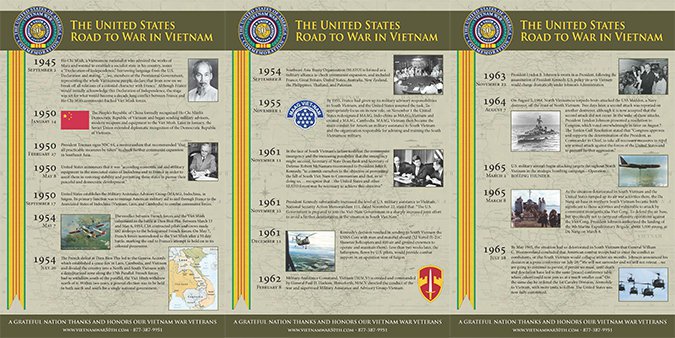The Chaplaincy in the Vietnam War
Today’s chaplains are military professionals specially trained to serve any spiritual need, for military personnel and their families, regardless of religious affiliation, ethnicity, or gender. Chaplains also advise military commanders on issues of religion, ethics, morale, and morals as affected by religion. Nearly 3,000 chaplains from the Army, Navy, and Air Force served in Vietnam, each chaplain with a vastly different experience of the war. Three chaplains earned the Medal of Honor, the nation’s highest military award for heroism. There are 16 members of the clergy memorialized on the Vietnam Veterans Memorial. In Vietnam, only male Christian and Jewish chaplains served in the military. They paved the way for today’s chaplaincy, which has included women chaplains since 1973, Muslim chaplains since 1993, Buddhist chaplains since 2004, and Hindu chaplains since 2011.
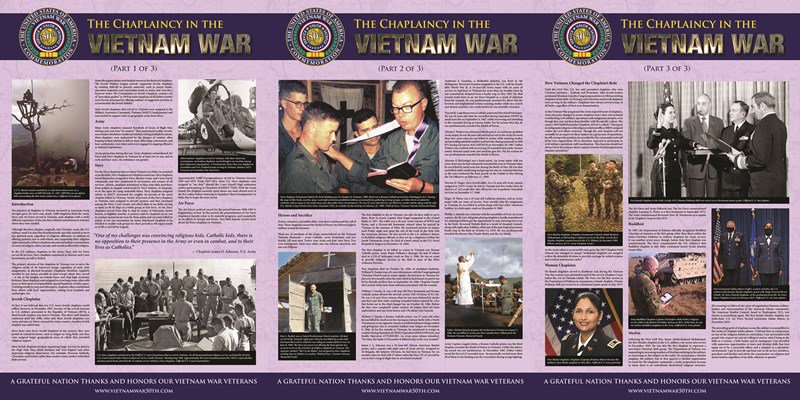
Indigenous Peoples in the Vietnam War
Following the collapse of French Indochina, Laos, Cambodia, and North and South Vietnam gained their independence. The region was home to many dozens of ethnic groups. The Hmong of Laos and the indigenous Highlanders of Vietnam, better known by the French term Montagnards, or mountain people, had distinct cultures, and little in common with the new nations in which they resided. Both Communist and non-Communist governments recruited ethnic minority peoples during the Vietnam War, each side with at least some success. At least 50,000 Highlanders and 23,000 Hmong served in combat as U.S. allies in Southeast Asia. This three-panel poster series introduces these diverse and fascinating peoples, provides insight into their lives, motivations, and aspirations, and considers their impact on the Vietnam War and its impact on them.
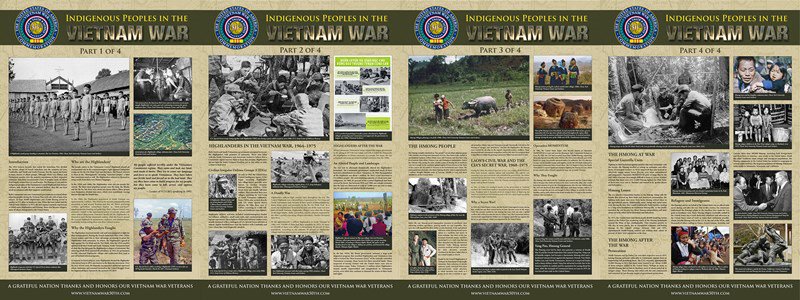
Native Americans in the Vietnam War
Native Americans served valiantly in the Vietnam War as they have in all of the United States’ conflicts. Many enlisted or accepted induction into the U.S. military out of patriotism and a sense of duty as Americans, others in deference to cultural imperatives based on a warrior ethos and the inspiration of their ancestors, still others to escape the poverty and the lack of opportunities in the cities, small towns, and Indian Reservations where they lived. This two-part poster series explores some of these motivations, and the accomplishments, the stereotypes, the bravery, and the pain that shaped the Native American experience during and after the Vietnam War.
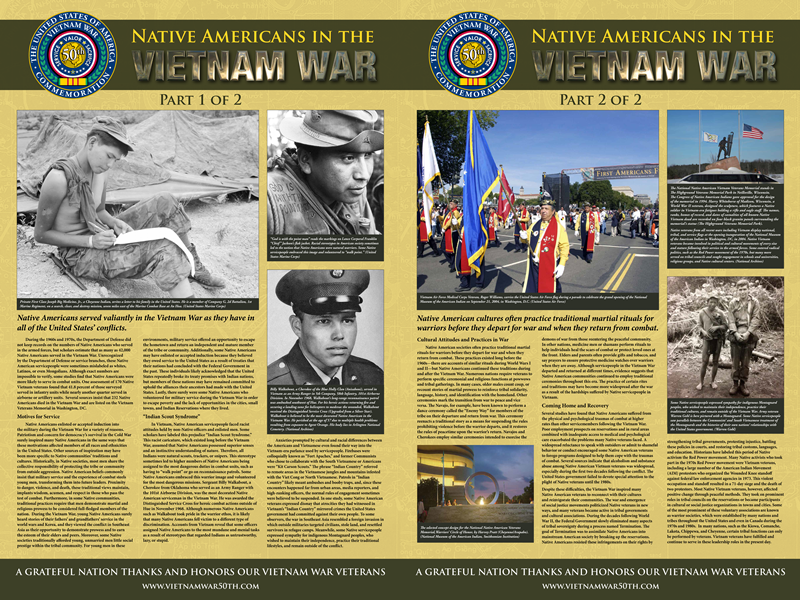
Service Organizations in the Vietnam War
If war is evidence of humanity’s capacity to achieve its goals through violence, thankfully, it is also proof of the power of service to alleviate suffering through empathy and kindness. Volunteers sent to Vietnam by the Red Cross, the United Service Organizations (USO), and faith-based charity organizations to support U.S. service members accepted great personal risk. In a war without clearly defined front lines, boobytraps, rockets, or mortar rounds cared little whether their targets were civilians or service members, men or women. Those who served through service organizations committed themselves to the concept of benevolence – that of mercy, kindness, generosity, and charity. Separate and apart from the U.S. military, yet no less vital, these persons gave their time, labor, and in some cases their lives, in service to others.
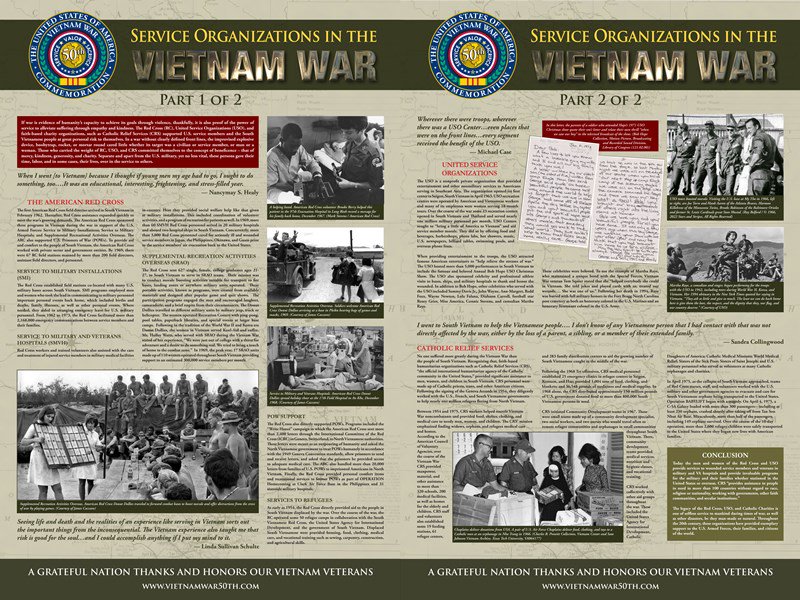
The U.S. Navy in the Vietnam War
From 1950 to 1975, the U.S. Navy operated in Vietnam and on its waters intercepting arms smugglers, supporting medical needs, providing fire support for troops ashore, collecting intelligence, and much more. This put the U.S. Navy at the forefront of every operation and logistical plan for achieving America’s goals and regional stability in Southeast Asia. Sailors and Naval officers were pivotal in meeting America’s strategic, operational, and tactical objectives – ashore, on the waterways and at sea, and in the air. Their efforts had a lasting impact in shaping the legacy and modernization of today’s U.S. Navy.
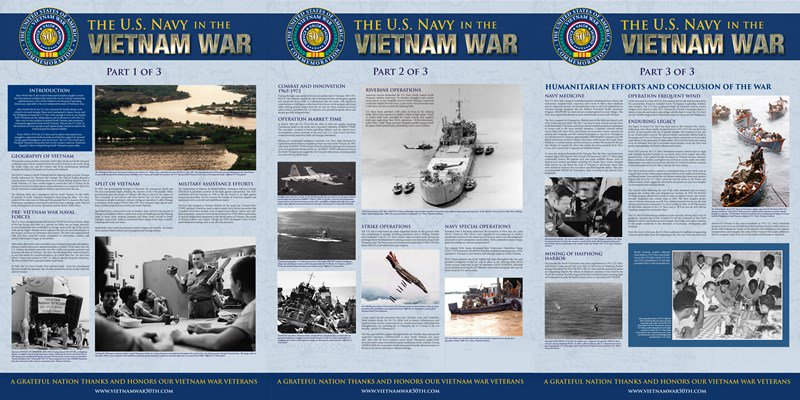
Making the Modern World
Public-private partnerships lent public personnel, funds, and equipment to scientific expertise at nonprofits, universities, and private companies across the United States to place the nation at the forefront of global readiness. From 1955 to 1975, the U.S. created and deployed sensors to detect adversaries, global positioning systems to accurately navigate its own and allied forces, unmanned aircraft to safely monitor areas of national interest, networked communications systems to quickly transmit strategic information, and smart munitions to limit collateral damage. These inventions grew beyond their original purpose to become staples of modern civilian life.
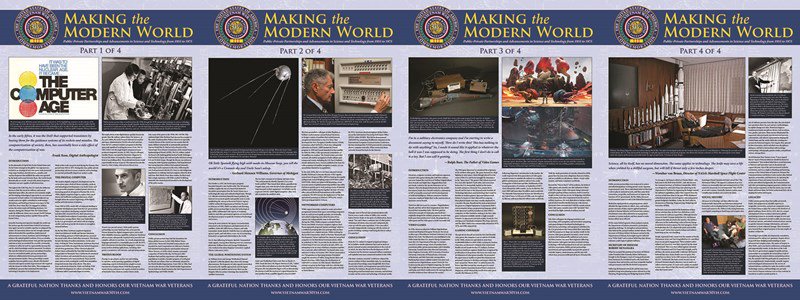
Reclaiming What Was Lost in the Vietnam War
Much was lost when the United States departed South Vietnam in 1975. The war, civil strife, social upheaval, and political scandal left our citizens questioning the Nation’s institutions and promises. While many wished to put the war behind them, the families of the then 2,646 missing and unaccounted-for U.S. personnel who had not returned from Southeast Asia found themselves unable to do so. Finding and returning these personnel required national will and a firm commitment by our leaders. U.S. officials tasked with recovery had to communicate openly and honestly about a war shrouded in secrecy. On an international level, the Nation required sustained relations with former adversaries. Accounting as fully as possible for missing and unaccounted-for U.S. personnel became a process where civilians and Government officials worked together to restore trust in the Nation’s institutions to return the missing. Much has been accomplished; more work remains.
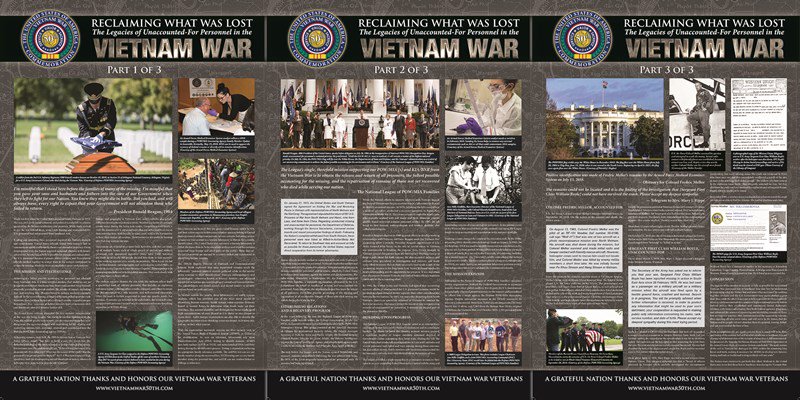
Casualties by Other Means in the Vietnam War
This past year brought with it a powerful reminder that pathogens can dramatically impact our daily lives. United States military personnel and citizens alike also encountered this lesson during the Vietnam War. Many mitigation processes developed during that period seemed to foreshadow those employed during 2020 in our struggle with COVID-19. Military personnel and citizens limited their exposure to pathogens, enacted simple yet effective measures to control the spread of disease, vaccinated to build immunity among the population, and reframed how they defined mental health. The Vietnam War left indelible legacies on the United States, one of the most important being the frequently forgotten reminder that, in dictating human events, affliction gets a vote.
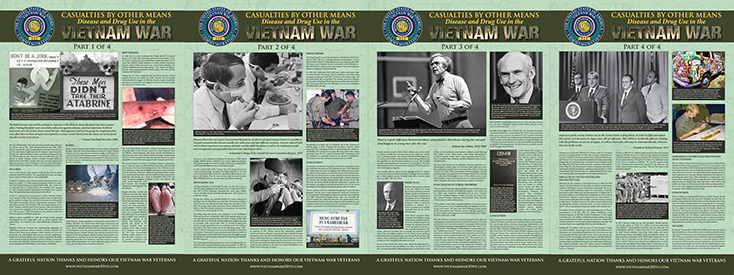
The Coast Guard in the Vietnam War
The U.S. Coast Guard maintained a presence in Vietnam for ten years. In July 1965, USCGC Point Orient exchanged fire with Viet Cong in the Service’s first combat since World War II, and it was not until April 1975 that this Military Service shut down its last LORAN-C station in Vietnam. In that time, approximately 8,000 Coast Guardsmen served in Vietnam. This three-panel poster highlights the Coast Guard’s organization in Vietnam, and the many roles Coast Guardsmen performed while serving there. It also details the vessels the Coast Guard brought with it, and how the U.S. Coast Guard presence enhanced the U.S. Military’s mission in Southeast Asia.
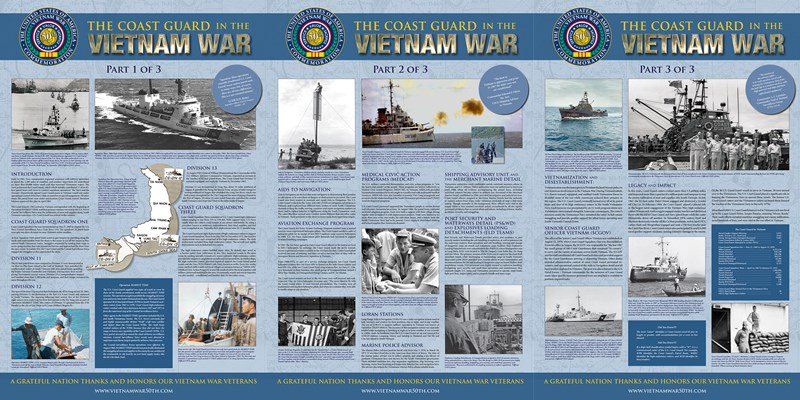
Intelligence in the Vietnam War
During the two decades of American involvement in the Vietnam War, age-old intelligence goals remained consistent: produce accurate, reliable, timely, and relevant intelligence to support military and political decision-making. As the war progressed, intelligence agencies grew and evolved, as did the technology and techniques used for intelligence collection and dissemination. This four-panel-poster provides snapshots of intelligence organizations, types of intelligence, and some dissemination methods at their peak during the war. American intelligence operations were vital to the success of combat operations; and civilian and military intelligence personnel efforts established a foundation for the development of modern intelligence operations, policy, and doctrine.
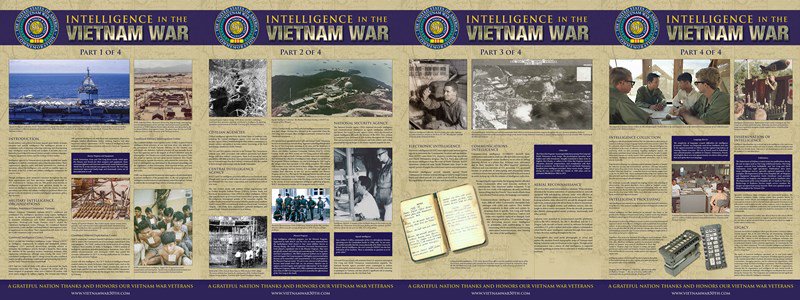
Counterinsurgency in the Vietnam War
The United States committed to South Vietnam to prevent further Communist expansion into mainland Southeast Asia. The Vietnam War presented the paradox of eliminating a threat while simultaneously creating a viable state. U.S. aims to build a stable South Vietnam and defeat the North Vietnamese Army and Viet Cong were inextricably linked. Success in counterinsurgency hinged on removing the North Vietnamese Army threat, severing its ties to the Viet Cong, rooting out the insurgents and replacing them with peaceful and stable governance, and binding South Vietnam's people to a growing South Vietnamese state. This paradox became one of the war's chief legacies; historians and contemporary policymakers continue to reconcile its significance to this day.
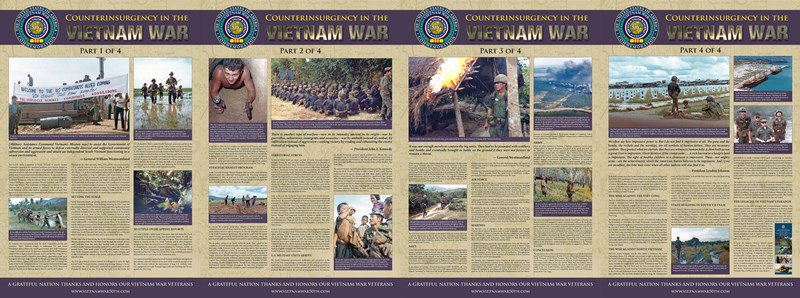
U.S. Sensor Technology in the Vietnam War
The North Vietnamese Army used the Ho Chi Minh Trail to move men and materiel through Laos and Cambodia into South Vietnam. In response, the Secretary of Defense Robert McNamara approved deploying sensor technology along the trail to detect movement and their path of incursion. Static sensors were embedded in the ground or hung in jungle canopies in Laos and Cambodia to aid American aircraft in targeting communist troop and truck supply trains. Sensors also proved vital in combat to U.S. forces during the Battle of Khe Sanh. In the years following the Vietnam War, sensor technology has advanced significantly, and has made its presence felt on not only the modern battlefield, but in the everyday lives of American citizens.
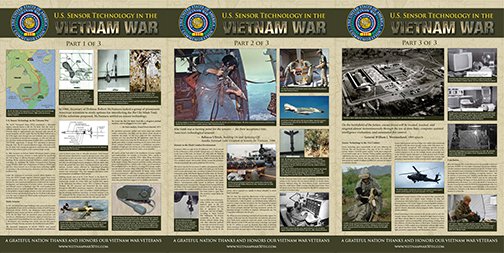
United States Allies in the Vietnam War
The fifth and final objective given to the Vietnam War Commemoration from Congress (states in Public Law 110-181 Section 598) is: To recognize the contributions and sacrifices made by the allies of the United States during the Vietnam War. The Vietnam War was a multinational effort to stem the tide of communist expansion-supported by America's Cold War rivals, the Soviet Union and China-in Southeast Asia. As in all conflicts, a complex web of motivating forces animated the combatants. Lofty ideals such as friendship, allegiance, and freedom spurred some to engage. Money, recognition, shared interests, and geo-political advantage played important roles in inciting action as well. Five nations joined the United States in sending combat troops to fight in South Vietnam against North Vietnam and the southern-based Viet Cong insurgency in the 1960s and 1970s. These nations were Australia, New Zealand, Philippines, Republic of Korea, and Thailand. This poster series describes their contributions and sacrifices during the Vietnam War.
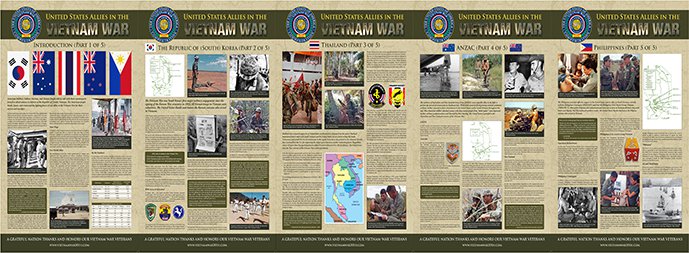
The POW Experience in the Vietnam War
While examining twentieth century U.S. Prisoners of War, Colonel R. J. Ursano, M.D., sagely remarked "There is no one POW experience." Though Vietnam produced far fewer POWs than the Korean War or World War II, for their part, Vietnam POWs experienced longer lengths of imprisonment. It was common for POWs to spend well over one or even two thousand days in confinement, equaling five or more years; several prisoners endured more than eight years in captivity. The majority were officers and downed pilots. U.S. POW returnees included 332 Air Force, 149 Navy, 121 Army, and 28 Marine Corps servicemen, in addition to 54 civilians. The following Poster is a description of the POW Experience in Vietnam, and is drawn from the recollections of POWs and their loved ones.
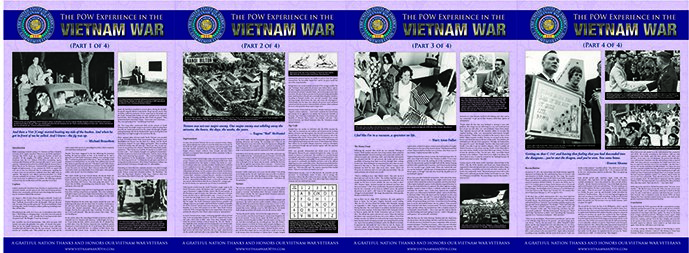
Air Base Defense in the Vietnam War
On November 1, 1964, the Viet Cong positioned six 81-millimeter mortars outside Bien Hoa Air Base and fired between 60 and 80 rounds onto parked aircraft and troop billets before withdrawing unmolested. The mortars killed four and wounded 30, destroyed five jet bombers and severely damaged eight others, and slightly damaged seven additional aircraft. The attack made plainly clear: in a conflict with no front lines and an armed local insurgency, base commanders and personnel needed to stiffen defenses and proactively guard air bases.
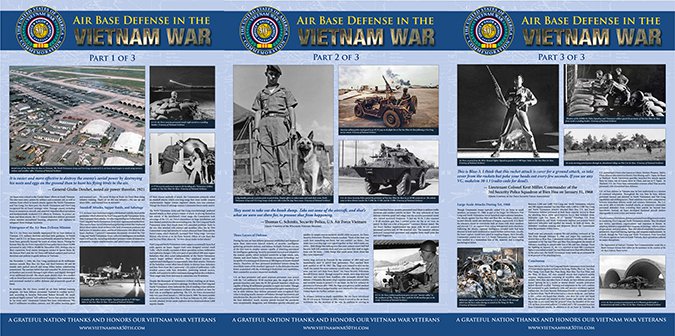
U.S. Army Airmobility in the Vietnam War
Viewers will note in the poster below the use of the term “Airmobility” as a single word. When the U.S. Army began developing the air mobile concept, it originally coined the term “Airmobility” as a single word. The History & Legacy Branch has elected to keep that term in the poster below to maintain historical integrity. That language has evolved over time and today, the correct use of the term, as stated in the DOD Dictionary of Military and Associated Terms, is two words - Air Mobility. Vietnam is justifiably known as the "helicopter war." To find, close with, and destroy the enemy, the U.S. Army employed helicopters to carry soldiers to battle, supply its units, establish and sustain fire support bases, observe and provide gunship support, and conduct aeromedical evacuation. In performing all of these functions, the helicopter became the centerpiece of Army operations in Vietnam, earned its place in the U.S. Military's organizational structure, and achieved its greatest legacy: the helicopter as a fixture in all contemporary military operations.
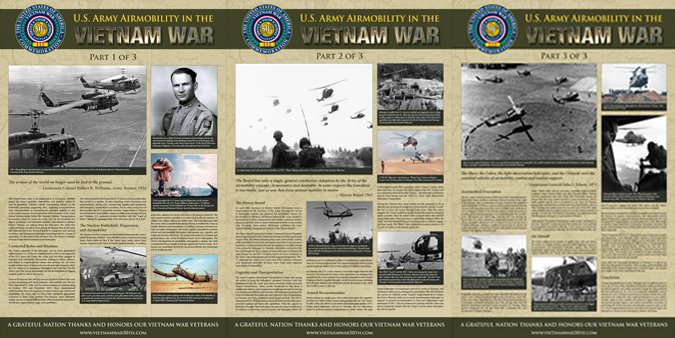
Combat Medicine in the Vietnam War
Medical teams provided exceptional, innovative care under extraordinary circumstances during the Vietnam War, and many servicemembers survived traumatic wounds and debilitating illnesses that would have incapacitated or mortally wounded them in previous conflicts. As a result of these efforts, military medical practitioners revolutionized crucial aspects of combat and civilian medicine. From the courageous medics, daring flight crews, tireless physicians, nurses, and medical technicians, the medical system that developed during the Vietnam War ensured that servicemembers received preeminent care throughout the health care continuum.
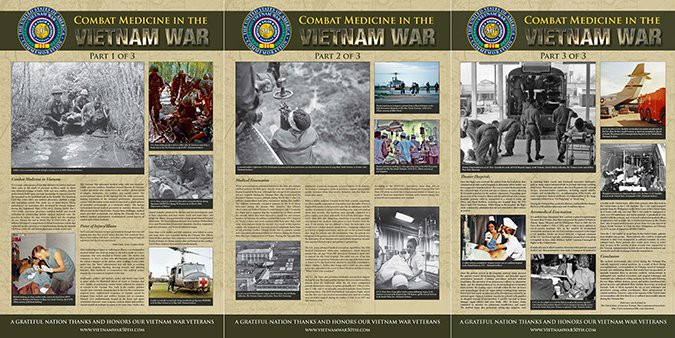
Medical Advancements in the Vietnam War
Throughout our nation’s history, armed conflicts have compelled the military and medical profession to introduce innovations for the care and treatment of America’s servicemembers. The Vietnam War was no exception. According to one source, 97.4 percent of casualties who reached the hospital survived. Rapid and effective air evacuation by “Dust Off” helicopter pilots and advancements in pre-hospital care were partly responsible for the higher number of wounded servicemembers who survived their injuries. Many of the medical advancements first pioneered by ingenuous and caring military healthcare professionals during the Vietnam War have become common practice in healthcare systems around the globe.
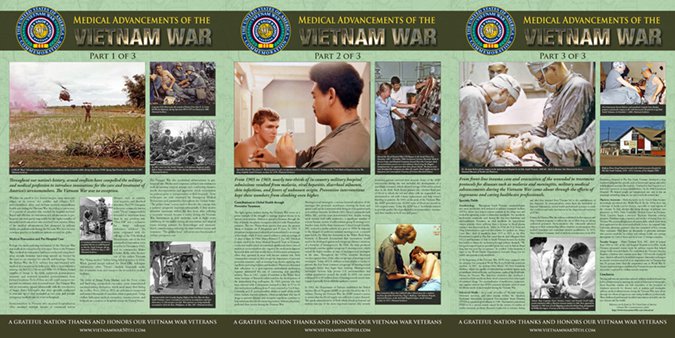
African Americans in the Vietnam War
African American troops served in the military with distinction during the Vietnam War. In the 1960s and 1970s, the United States’ long history of racial inequality and segregation culminated in the civil rights movement. The social and political turmoil crept through American society, including the U.S. military.
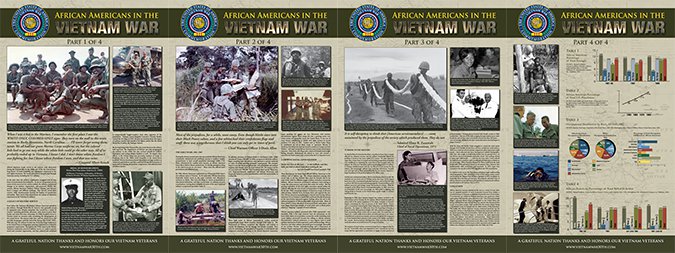
Military Nurses in the Vietnam War
Whether stationed with training units, in hospitals, on planes, or aboard ships, in the Pacific Theater or the United States, military nurses served with distinction throughout the Vietnam War caring for U.S. military personnel, Allied troops, and civilians.
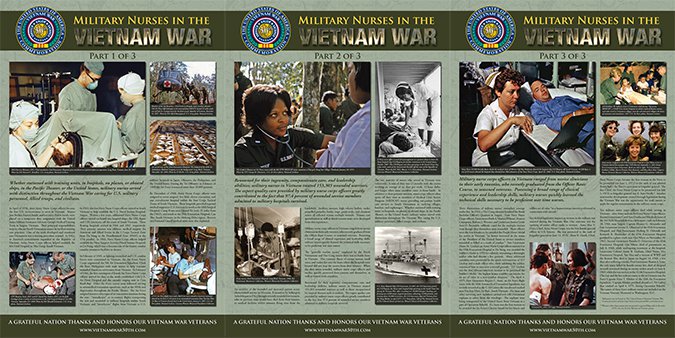
Riverine Operations in the Vietnam War
With its rich, fertile soil and plentiful water, the Delta produced most of the country’s rice crop, and its 3,000-mile network of waterways afforded farmers with an efficient means to transport their produce to market. But in 1965, a group of Communist insurgents, known to U.S. troops as the Viet Cong, dominated the Mekong Delta and the adjacent Rung Sat mangrove swamp. From their concealed bases in the Delta, Viet Cong troops launched attacks against nearby allied forces and harassed water traffic moving in and out of the port at Saigon. The Delta became a stronghold for the Viet Cong, and they exploited the area as a source of food and supplies, collecting taxes from the local populace. In order to secure the Delta and restore it to Saigon’s control, the United States determined to clear out the insurgents with a series of riverine campaigns.
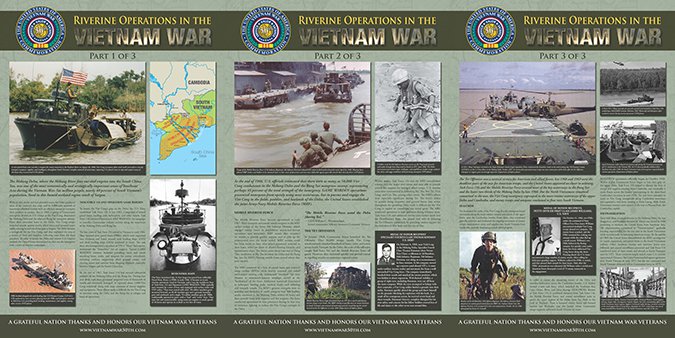
U.S. Servicewomen in the Vietnam War
Women in the United States military during the Vietnam War held diverse and important roles supporting the war mission. Many servicewomen stationed in the combat zone served with distinction. Women line officers, staff officers, and enlisted personnel performed a range of military occupational specialties in the Army, Navy, Air Force, and Marine Corps.
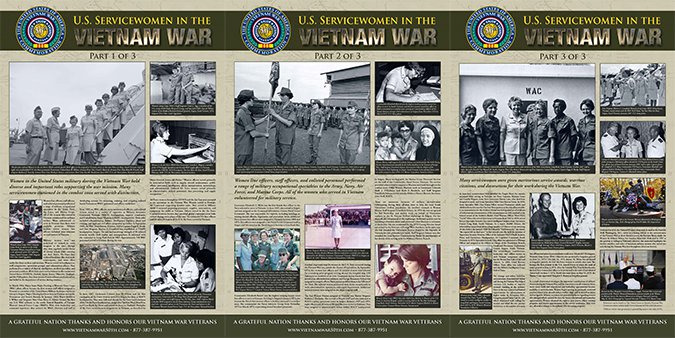
The United States Road to War in Vietnam: 1945 - 1965
"While historians know with certainty that the Duke of Wellington bested Napoleon at Waterloo on 18 June 1815, the Germans surrendered on the Western Front on 11 November 1918, and the Japanese attacked Pearl Harbor on 7 December 1941, they must still live with ambiguity in offering answers to many complex historical questions. The question of when the Vietnam War started for the United States falls into that category of ambiguity. It is impossible to state categorically that one date or another is the precise date on which the start of the war for the United States occurred. Put differently and emphatically: no obvious and verifiable start date exists. Probably the truest, though not the most satisfactory, statement to be made is that the process by which the United States became embroiled in the war was evolutionary and incremental." (Excerpt from a paper by Dr. John Carland, Historical Office of the Secretary of Defense titled, "When Did the Vietnam War Start for the United States.")
This three poster series outlines some of the significant political decisions and military events that incrementally committed the United States to deeper involvement in the Vietnam War.
